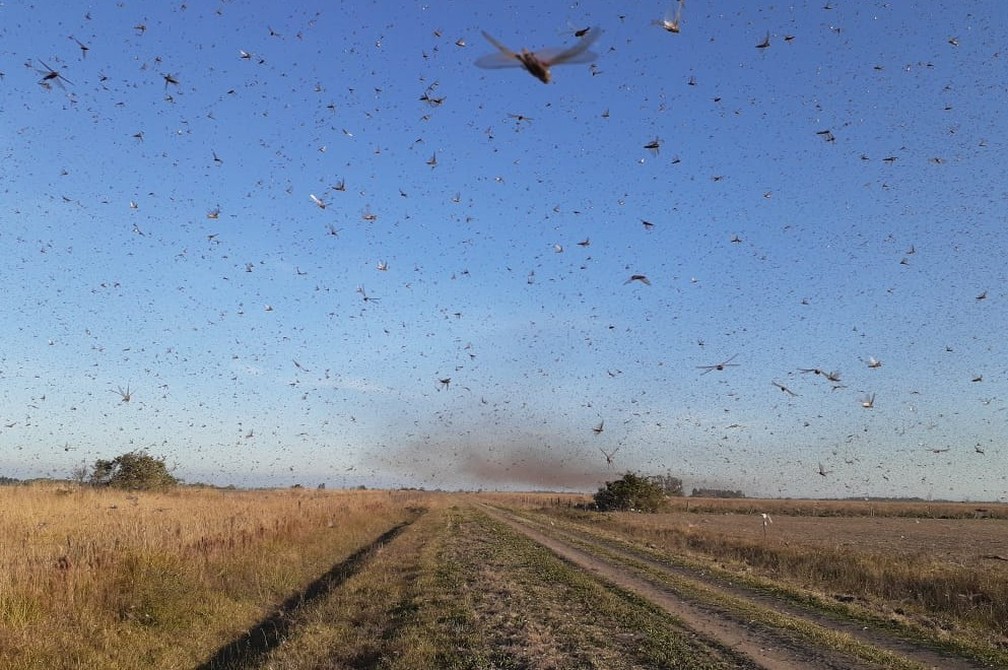RIO DE JANEIRO, BRAZIL – Rural producers and government officials in Argentina are monitoring the entry of a cloud of locusts into the country. The insects came from Paraguay and destroyed corn crops there. Now the swarm is advancing in Argentina on the border with Brazil and Uruguay.

According to the neighboring country’s projection, the insects can reach the west of Rio Grande do Sul and Santa Catarina, posing risks to the crops of these states.
Daniel da Costa Soares, an agronomist from Emater de Uruguaiana in Rio Grande do Sul said that the situation is new for both producers and professionals in the area. “We are still not very sure what will happen, whether they will reach here or not, but we are already talking to producers about it,” he says.
Emater’s guidance is for producers to constantly monitor their crops.
According to the Argentine government, the cloud reached the country late last week. The main regions affected in Argentina are the provinces of Santa Fé, Formosa and Chaco, where there is sugarcane and cassava production and the climate condition is favorable.
Plaga de langostas llega a Argentina: comen como 350.000 personas
Los voraces insectos provienen de Paraguay y tienen en alerta a los agricultores de la provincia de Formosa.
Los productos amenazados por estos insectos son los cultivos de mandioca, maíz, caña de azúcar. pic.twitter.com/1KDB2VjGHo
— 𝑱𝒐𝒓𝒈𝒆 𝑹𝒂𝒗𝒂𝒏𝒂𝒍𝒆𝒔 𝑨. ♠♥♣♦ (@jravanales) June 19, 2020
There can be up to 40 million insects in approximately one square kilometer, which in one day consume pasture equivalent to what 2,000 cows or 350,000 people would eat, said Argentinian agronomist Héctor Medina.
#Alerta #Langosta 🦗⚠️#SantaFe
Como habíamos pronosticado, la manga de langostas ingresó a la provincia en el día de hoy y luego de desplazarse casi 140 km se asentó en cercanías de la localidad de Lanteri. pic.twitter.com/YHPHSEN8H5— Senasa Argentina (@SenasaAR) June 18, 2020
The Argentine government says the insects may travel through towns and cities, but they do not directly harm human beings, they only pose risks to crops and pastures.
#AlertaLangosta ⚠️🦗 Constatamos la presencia de una manga de #langostas proveniente de Paraguay 🇳🇱 en Colonia Santo Domingo, localidad de General Manuel Belgrano, #Formosa. Estamos evaluando la densidad de la población de la plaga y los daños a los cultivos de maíz y mandioca. pic.twitter.com/Lc52YctoA4
— Senasa Argentina (@SenasaAR) May 22, 2020
There have been previous swarms of locusts in the hottest and most humid regions of Brazil, such as Pará. In 2017, the insects crossed several municipalities in the state, attacking cassava crops, causing economic losses, in addition to risks to the environment and health of the population, with the indiscriminate use of insecticides and other defensive agents.
Source: G1

